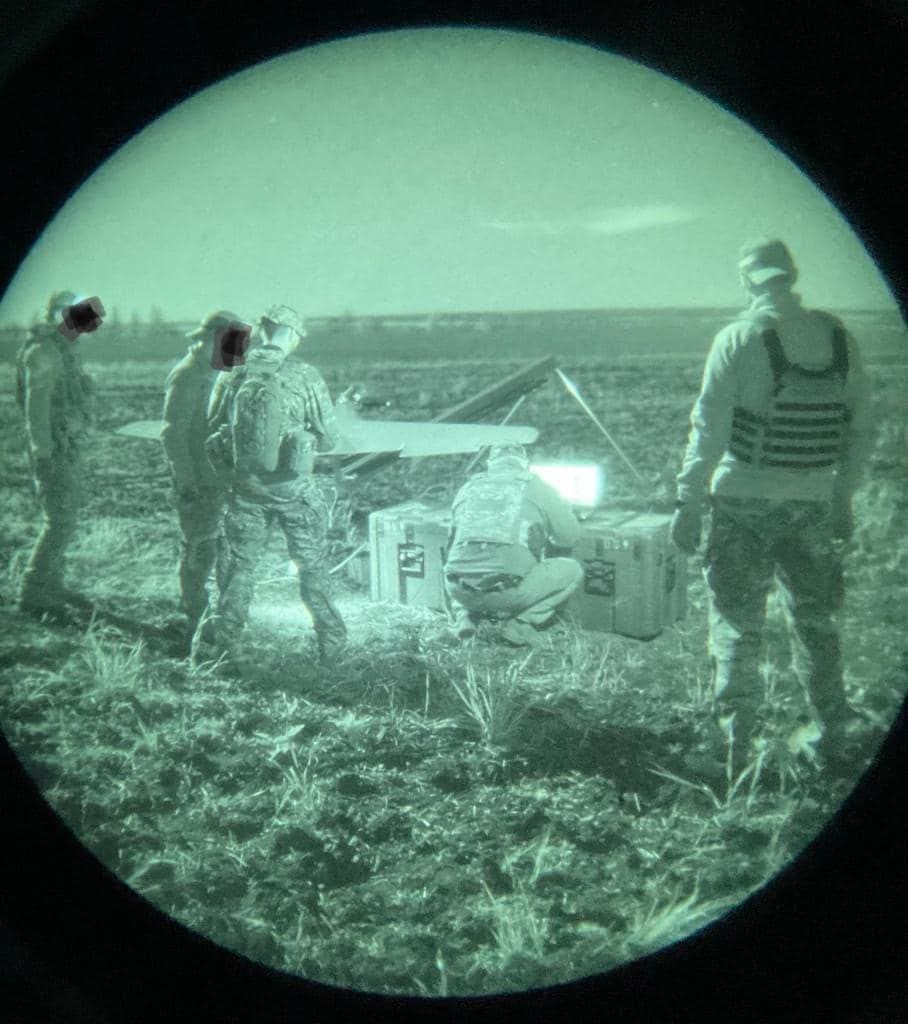Drone strikes have hit Moscow yet again, the third such strike in just over a week. The pace is increasing, and a heavier bombardment is on the way as new Ukrainian drones become operational.
In its analysis of the Moscow strikes, the New York Times
NYT
The UJ-22 Airborne has been in service since 2020 and was initially fielded as a reconnaissance drone with some bombing capability. It appears to have been drafted into service for one-way attack missions with an explosive payload, but it is possible that the version seen in Moscow is a much simpler, cheaper drone than the UJ-22 – UKRJET also make loitering munitions and have experience in this field.
The other two are new drones quickly assembled from commercial components, mainly imported from China. But while previous Ukrainian improvised attack drones like the Mugin-5s used to attack Russian bases in Crimea used standard airframes, these appear to be custom-built for the strike mission. For example, the Beaver has a pusher propeller at the back, making it harder to spot on radar.
What comes next is likely to be more polished and more capable. One Way Aerospace, who also make small FPV attack drones, say their new AQ-400 Scythe will see action later this month. The Scythe has a range of over 700 kilometres with a payload of over 40 kilos, around twice as much as the drones currently hitting Moscow. The Scythe is ‘engineered for affordable mass production’ and will be produced in far greater numbers.
An even larger weapon is also on the way. Late last year the state-owned Ukroboronprom trailed a new attack drone carrying a 75-kilo warhead to 1,000 km. In June the company – now converted into a joint stock company called Ukrainian Defence Industry — announced that the drone had been successfully tested, although no images or video have been released. One Ukrainian media outlet says it is called Achilles (after the swiftest of the Greek warriors at Troy), but this has not been confirmed.
On July 21st, Ukraine’s Ministry of Defence announced that it had adopted 28 models of Ukrainian-made UAVs for service, including 9 kamikaze types of which 3 are ‘of the aircraft type’ (the others are likely various kamikaze multicopters). They mention that one of these is from the JSC Ukrainian Defence Industry and the procedure to start using it operationally is underway. Expect to see results soon.
In addition to these scaled-up drones, Moscow will also have to deal with large numbers of small, low-cost attackers. In a piece of pure trolling, Ukrainian developers posted images of a new drone called ‘Rubak’ celebrating its launch with cake and sparkling wine. Rubak is a small delta-winged drone with a claimed range of over 500 km; there will be a tradeoff between range and payload, so by swapping some explosive for fuel it will be able to reach further. The Rubak costs a reported $15k,and the goal is as much to confuse and overload Russian air defenses as well as hitting targets, enabling the bigger drones to get through.
Another new project, Trembita, takes the low-cost decoy/attack approach even further. It has a gasoline-powered pulsejet engine, a type with no moving parts famously used in Germany’s WWII V-1 ‘buzz bomb’ flying bombs. Pulsejets are too noisy and produce too much vibration for crewed aircraft, but are ideal for inexpensive one-way drones.
The Trembita, named after a traditional alpine horn, announces itself with 100 decibels of engine noise (expected to have some psychological effect) and a large infra-red and radar signature, inviting the Russians to waste expensive surface-to-air missiles shooting it down. If they ignore it, the 20-kilo warhead presents a real threat, even if it may not be so much a precision weapon as some of the others. The makers say that Trembita is being mass-produced in dispersed garage workshops across Ukraine. They plan to launch it in barrages of at least 20 in conjunction with other weapons to overwhelm Russian air defenses.
A few months ago, drone attacks on Moscow were a novelty. It seemed unbelievable that one of the most heavily-defended cities in the world could be troubled by air attacks from slow, simple drones. But what was unbelievable has now become commonplace, and Ukraine’s new locally-produced strike capability threatens not just the capital but every military airfield and fuel or ammunition storage site.
The strategic effect of these drone strikes may not be great for now. But the drones are getting more capable, and despite promises from the relevant minister, Moscow’s air defenses do not seem to be getting any better. The drones also hold at risk every Russian airbase, ammunition dump and fuel storage site within range. Will Russia pull back more air defence systems from the front line, or refrain and listen to a growing drumbeat of explosions? How long can Moscow’s airports stay open?
The drone war has arrived in Russia, and its momentum is growing.
Read the full article here





